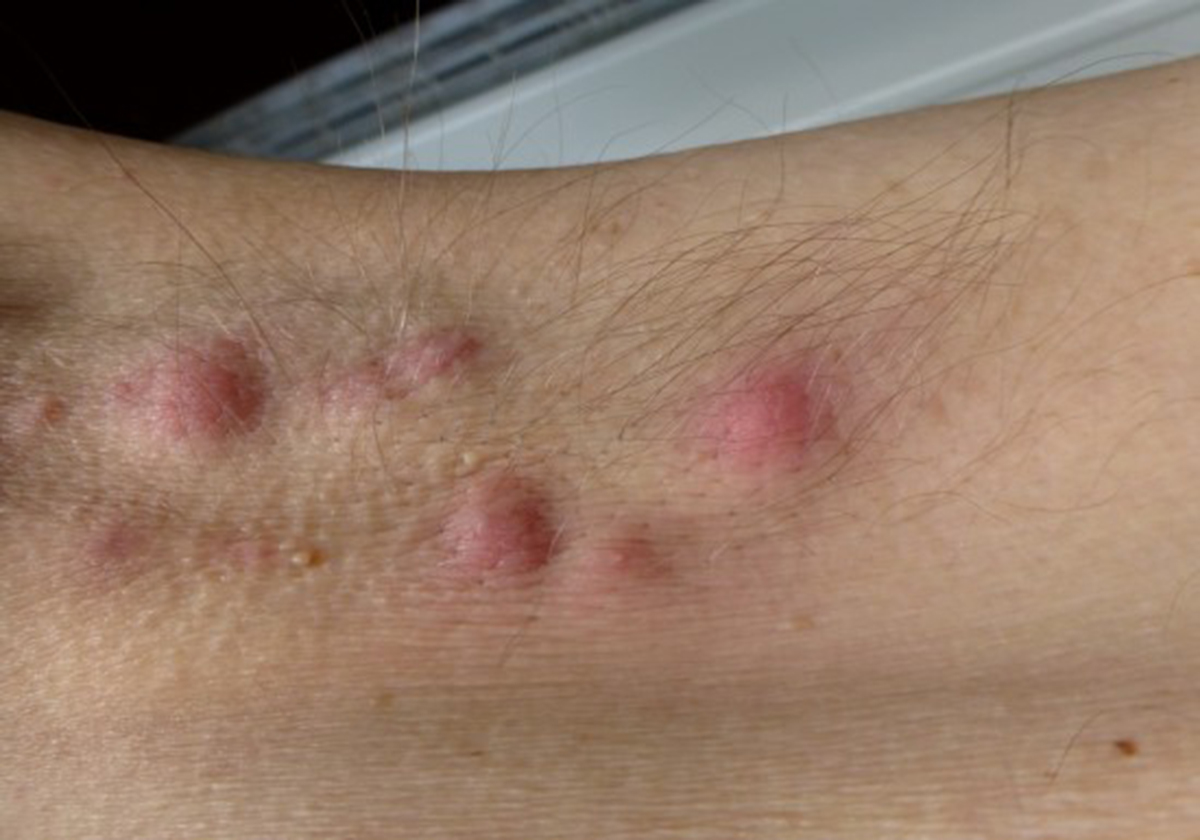Table of Contents
Imagine the nastiest pimple you ever had as a teenager. Then imagine it the size of a golfball, painful, growing in a longline with other huge pimples on your groin, or under your breast, or on your testicles, or in your armpit.

And then imagine that your doctor cannot give you any treatment because your doctor cannot figure out what it is.
This baffling, painful autoimmune disease typically strikes teens and young adults, and although it is not an infection, it often follows a sexually transmitted infection. About 1% of males and up to 4% of females experience the disease at some point between puberty and middle age. It is very rare in women who have past menopause and in men over the age of 55.
Studies report that the highest incidence was among young women aged up to 30 years, and what's interesting is that the incidence of hidradenitis suppurativa has risen over the past four decades, particularly among women. The question remains — if this due to the rise of obesity, smoking, body awareness or the spread of STD? [1]
Women are more likely to have hidradenitis suppurativa in the area of underarms and upper back, while men face them more often in the pubic and surrounding area.
This particular study also proved that more than half of the patients that were examined were obese, and almost three-quarters of these patients were either former or current smokers and 4 in 10 patients were diagnosed with depression and/or acne. All in all, obesity, smoking and gender were significantly associated with more severe cases of hidradenitis suppurativa.
What Are the Symptoms of Hidradenitis Suppurativa?
The condition does not affect the apocrine glands that "leak" sweat, found all over the body, but concentrates in the apocrine glands in the armpits, on the groin, and around the anus that can "pour sweat. The normally thin lining of the apocrine sweat glands grows, and grows, and grows in all directions, even though the skin around the gland cannot stretch to accommodate it.
A typical, usually non-painful symptom of hidradenitis suppurativa are small pitted areas of skin containing blackheads — these blackheads often appearing in pairs.
The red and tender lumps and bumps caused by hidradenitis suppurativa usually go away in 2 or 3 months, but not before they bleed and leak pus. Sex life is out of the question, and so is a day sunning on the beach. Then when one bump heals another breaks out right next to it and the process starts all over again. The drainage may have an odor and may be accompanied by itching and burning. These lumps and bumps usually appear in areas where skin rubs against skin, such as groin area, anus, under breasts or armpits.
These lumps that develop under the skin can grow to a size of a pea or bigger and they feel hard to the touch and can move.They may persist for years, they can enlarge and become inflamed. Sometimes, over time tunnels can be formed — these are tracts connecting the lumps may form under the skin.
What Causes Hidradenitis Suppurativa?
When people who have HS go to their doctors for help, the doctor typically assumes that the problem is an infection. They are counseled to keep themselves cleaner and take antibiotics.
Neither scrupulous hygiene nor antibiotic treatment will make the condition go away.
READ Pimple-like Bumps on Penis and Testicles
But what people who have HS know is that bumpy skin forms in response to certain triggers. These may include [1]:
- Antiperspirants, especially those that contain tea tree oil.
- Certain medications, such as birth control pills, and lithium.
- Tight clothing, and fabrics that do not "breathe."
- Hot, humid climates. Hot, dry climates often cause the condition to "dry up."
- For people who are overweight, exercise without properly fitting clothing and athletic gear. HS is activated by pressure on the skin, and obesity puts additional pressure on the skin. Losing weight, unfortunately, will not cure the disease.
- Photo by shutterstock.com
- Photo courtesy of Jon by Flickr : www.flickr.com/photos/thetejon/510200654/

